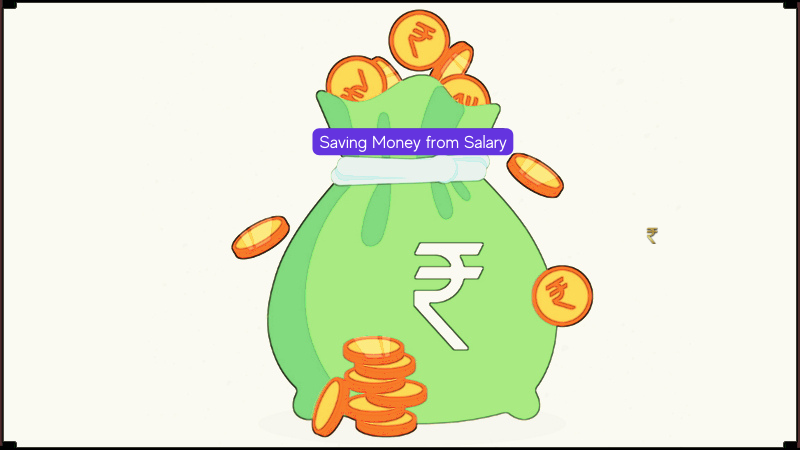
The prime function of banks is lending and it is their largest revenue source apart from revenue through credit cards. These banks essentially lend the money deposited by the depositors in the savings account or the FDs, RDs, etc. However, three are many hoops that a borrower has to go through to the eligible for various categories of loans offered through this traditional route. So when there is an option to borrow directly from individual lenders, it will eliminate all the delay and the cumbersome nature of lending through the traditional route. This dynamic model of lending is fast gaining a foothold in the Indian markets and is known as P2P lending.
Given below is the basic meaning of the same and the key factors to be aware of while opting for this model.
What is P2P lending?
P2P lending refers to the peer to peer lending that is essentially a form of direct lending of funds to eligible borrowers (individuals and businesses). There is no involvement of a third-party intermediary like traditional banks or NBFCs that take funds from individual lenders and forward the same to retail or institutional borrowers.
This form of lending is heavily based on dynamic fintech technologies and is a good source of securing finance for borrowers who may not be eligible to get enough credit through the traditional modes on account of low credit scores or unfavorable credit history.
These platforms provide a win-win situation for borrowers and lenders alike. Borrowers can get easier and faster access to funds and the lenders, on the other hand, can get better returns (usually in double digits) as compared to traditional and safer investment options like bank FDs, Post Office Savings Schemes, NSC, debt mutual funds, etc. This makes it attractive for either party and is gaining popularity in recent times in our country where there is a huge unorganized sector of lending which often leads to the exploitation of borrowers.
How does P2P lending work?
As mentioned above, P2P lending is a digital lending model. Under this model, the eligible borrowers and lenders are connected to each other based on specific algorithms on these digital platforms. The potential borrowers have to register on the digital P2P platform using their valid credentials. Such platforms will then verify the credentials and assess the credit risk for each such potential borrower. Based on this assessment, the borrower is assigned an interest rate and is then matched to potential lenders after the application of both parties is approved. The borrower can select a suitable option based on various factors like tenure of the loan, rate of interest, etc. The borrower is responsible for the repayment of the loan taken as per the agreed schedule. The P2P platform that is responsible for bringing the borrower and the lender together will charge a fee for the same and extend their various services.
Leading P2P platforms & their interest rates in India
| Name of the platform | Interest Rate Charged | Max loan amount | Max repayment tenure allowed | Listing fees |
| Faircent | 12% | Rs 5 lakh | 6 to 36 months | Rs 500 |
| Lendbox | 16% onwards | Rs 5 lakh | 6 to 36 months | Rs 500 |
| i2ifunding | 12% onwards | Rs 10 lakh | 1 to 36 months | Rs 500 |
| Lendenclub | 6.5% onwards | Rs 5 lakh | Till 24 months | Rs 750 |
Is P2P lending safe? What are the pros and cons?
There are many fintech platforms that provide a dynamic lending format through P2P lending. These platforms are gaining huge popularity since the time they are launched in India. However, they come with their own set of advantages and disadvantages. The details of the same are given below.
Pros
The pros of opting for the P2P lending format are,
- Better investment opportunity for lenders
P2P lending provides a n opportunity for earning higher returns on the investment which can be a huge boon for investors. This can help in increasing the net portfolio returns and thereby accelerating the pace to meet their financial goals.
- Easier access to financial assistance
P2P lending is also known for its prompt lending process. Borrowers can get access to funds within 3 to 5 days as per the guidelines of the lending platform. The eligibility criteria for the loans is also quite flexible to include a larger customer base and ensure maximum reach.
- Competitive interest rates
Although P2P lending is at its nascent stages in India, there are many players already. This ultimately results in better and competitive interest rates for the customers as well as lower additional charges that can improve the net returns for the customers.
Cons
The disadvantages of opting for loans through P2P lending are,
- High credit risk
P2P lending involves lending of funds to total strangers that are connected on the P2P platform through a digital algorithm. These borrowers usually have a lower credit score and may not be eligible for borrowings through the traditional route or may find it expensive so they turn to this dynamic model of lending. Therefore, the credit risk in such cases is usually quite high. There may be cases of default and loss of capital investment for the investors which can drive away current or potential investors.
- Lack of any insurance or government protection
As this form of lending is relatively new to the Indian markets and is still being developed, there is no concrete framework as in the case of traditional lending options. There is no availability of insurance against the credit risk of investment or any government backing that can assure the investors of their investments. Therefore, such formats are unsuitable for risk-averse investors or investors with low-risk appetite.
- Limitations due to increased compliance and logistics
In order to secure the interest of the investors, there are certain basic guidelines issued for either parties involved in P2P lending. Also, the P2P platform needs to adhere to set guidelines so as to be eligible for providing the intended services to its customers. Moreover, P2P lending format is not available pan India and hence, access to certain borrowers and lenders is limited.
What are the factors to consider while opting for P2P lending?
While opting for P2P lending, borrowers and lenders alike need to understand the basic format of this type of lending and also the risks associated with it. Some of the key factors to be considered are highlighted below.
- Key features of lending through the P2P format
RBI guidelines have set the basic framework to be followed by the P2P platform for the smooth functioning of the process. These guidelines include due diligence of the participants and a thorough credit assessment as well as risk profiling of the borrowers along with required disclosure to the lenders. Lending and default under this format also impact the credit scores of the parties involved and hence, due care must be ensured the credit scores and long-term credit history is not damaged in the process. This format is also required to provide legal services for the recovery of loans in case of any default or delay.
- Key features of the loan
Apart from the above guidelines, participants must also be aware of the limitations imposed by RBI with respect to maximum exposure on an individual level as well as the platform as a whole. The key restrictions include,
- Maximum loan exposure between a lender and a borrower to be restricted up to Rs. 50,000
- Maximum exposure per borrower across all P2P platforms be restricted up to Rs. 10,00,000
- Maximum exposure of a lender across all P2P platforms is restricted up to Rs. 50,00,000.
- Maximum tenure of loans under this format of lending is up to 3 years or 36 months
- Compliance with RBI guidelines
Lenders and borrowers must ensure that the P2P platform is registered with RBI as the risk of investment are significantly lowered in such cases. Also, investors will have the benefit of the regulatory framework of the P2P platform ensuring further security of their investment and the authenticity of the lending. Currently, P2P lending is available with NBFCs in India that are registered with RBI. Furthermore, RBI guidelines also require the P2P platform to send timely credit information relating to the repayment history of the borrowers to credit rating agencies.
Conclusion
P2P lending platforms provide an easier option to get loans quickly and with minimal documentation and eligibility. However, these loans come with high risk which is often considered to be higher than investment in equity and equity-related instruments as well. Therefore, while this model provides an excellent opportunity to earn higher returns, it should be opted only from surplus funds and cannot replace the debt funds or low-risk investment options from the investment portfolio.
FAQs
RBI started regulating P2P lending in India from 2017.
No. A P2P lending platform has to first register with the RBI and adhere to the guidelines to be eligible for this form of dynamic lending.
The maximum tenure of loans provided under P2P lending.
The maximum number of loans that can be provided by a P2P lender across all the platforms is capped at Rs. 50,00,000.



























